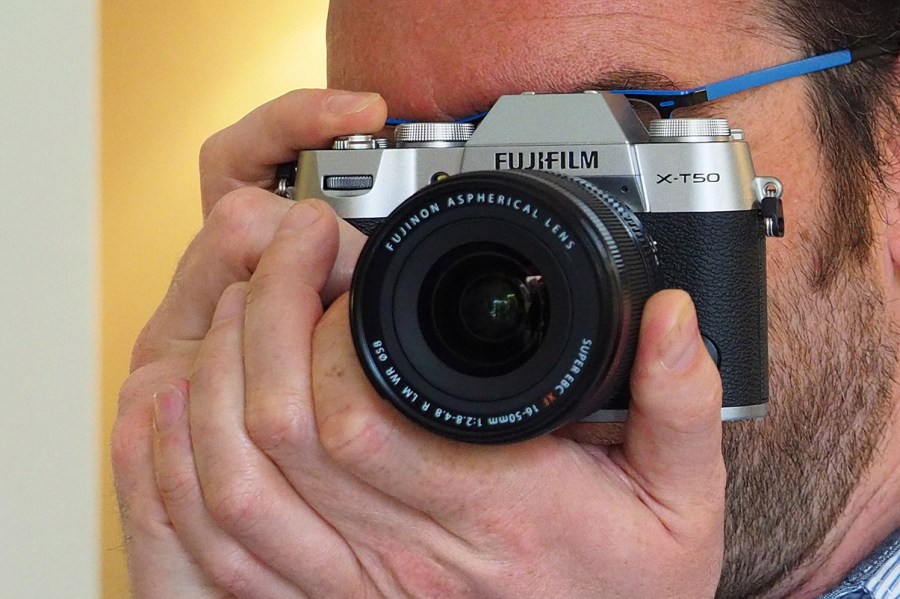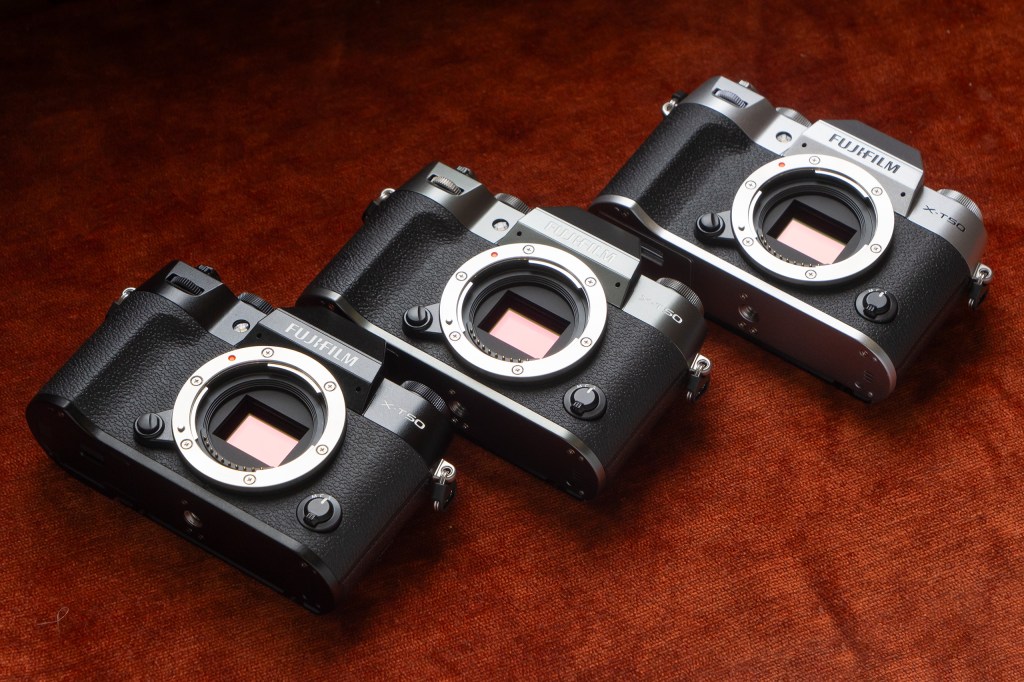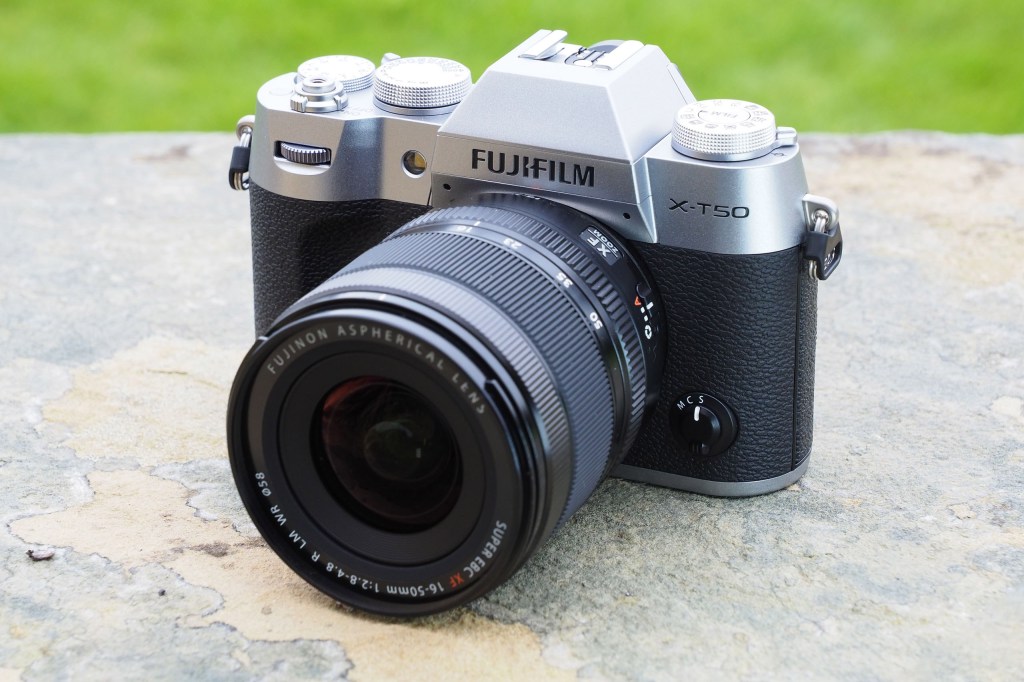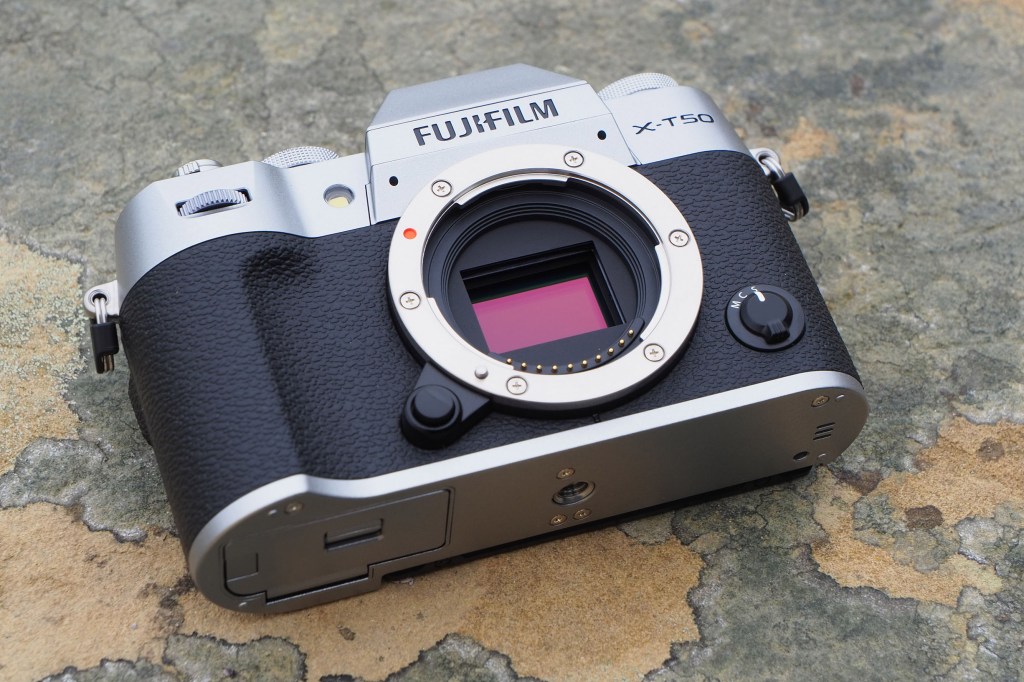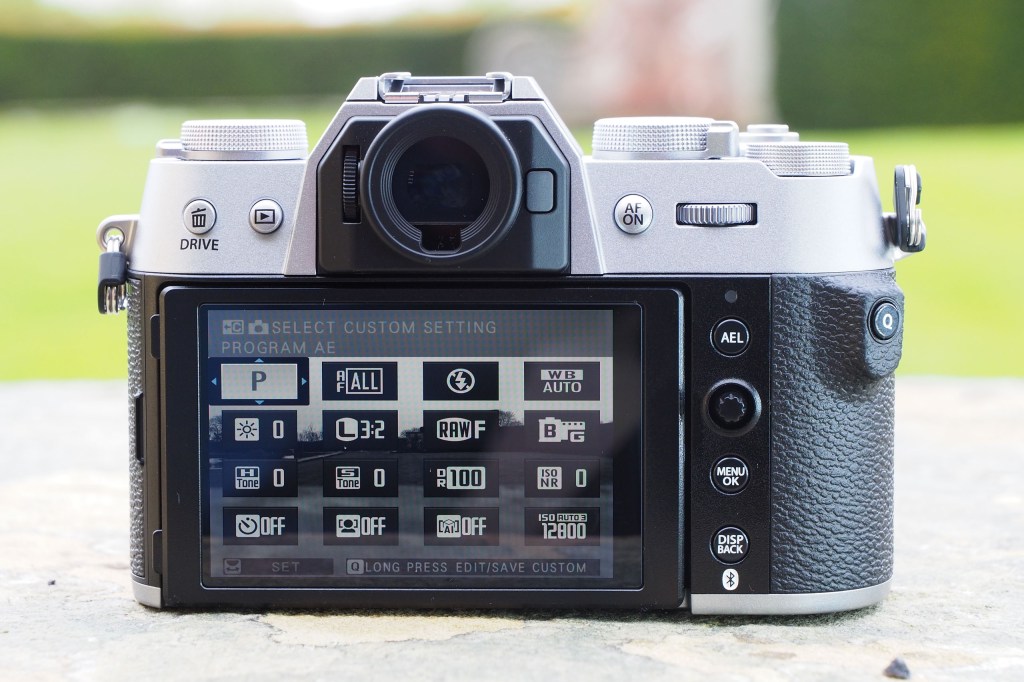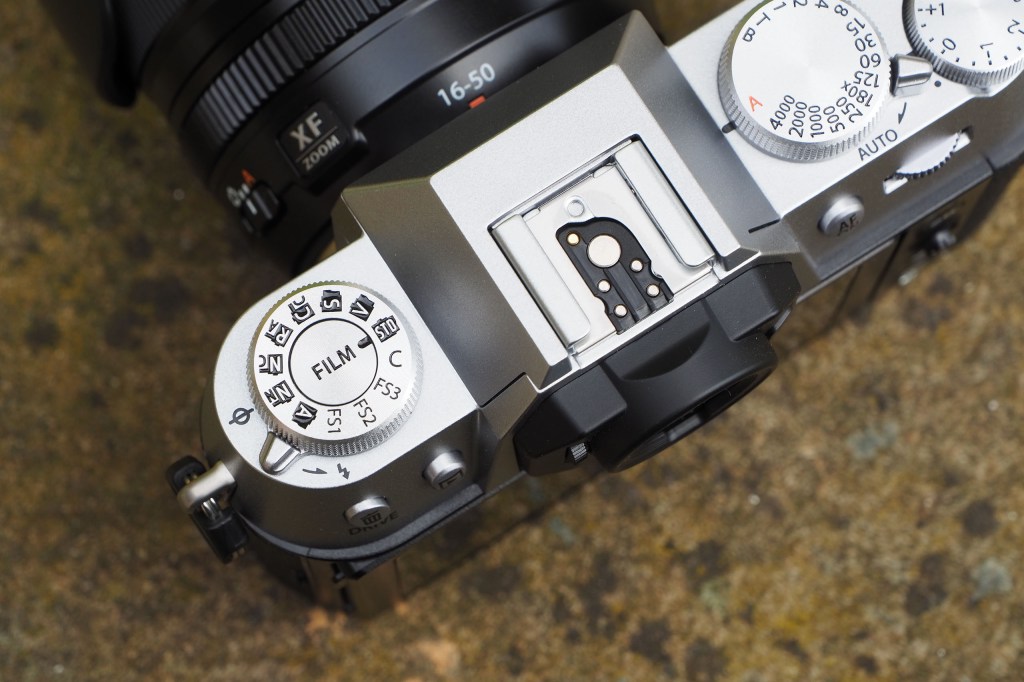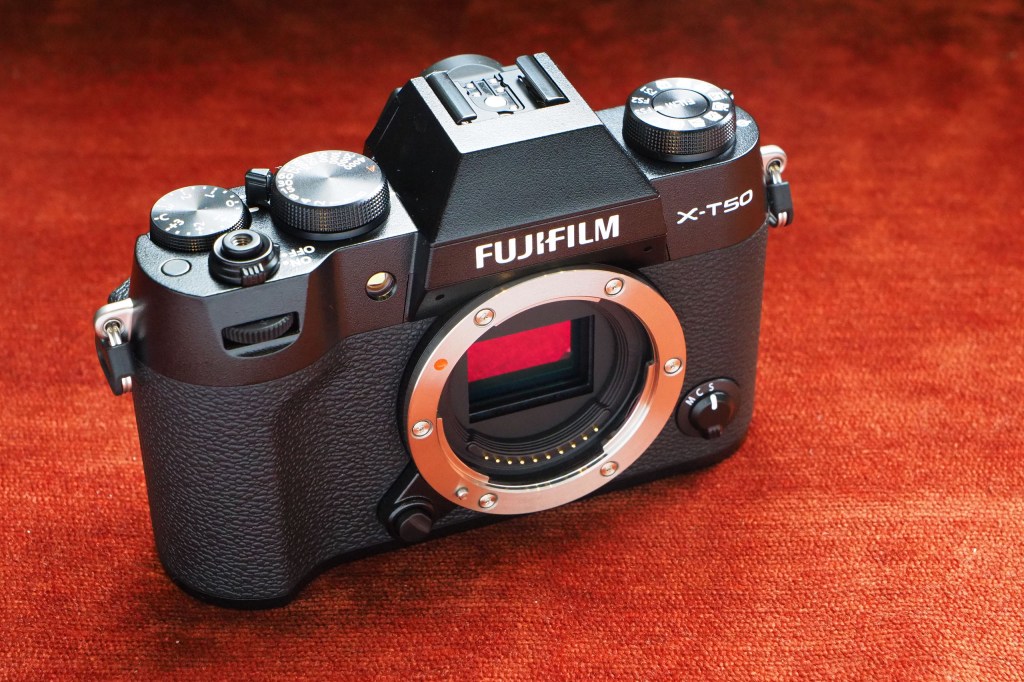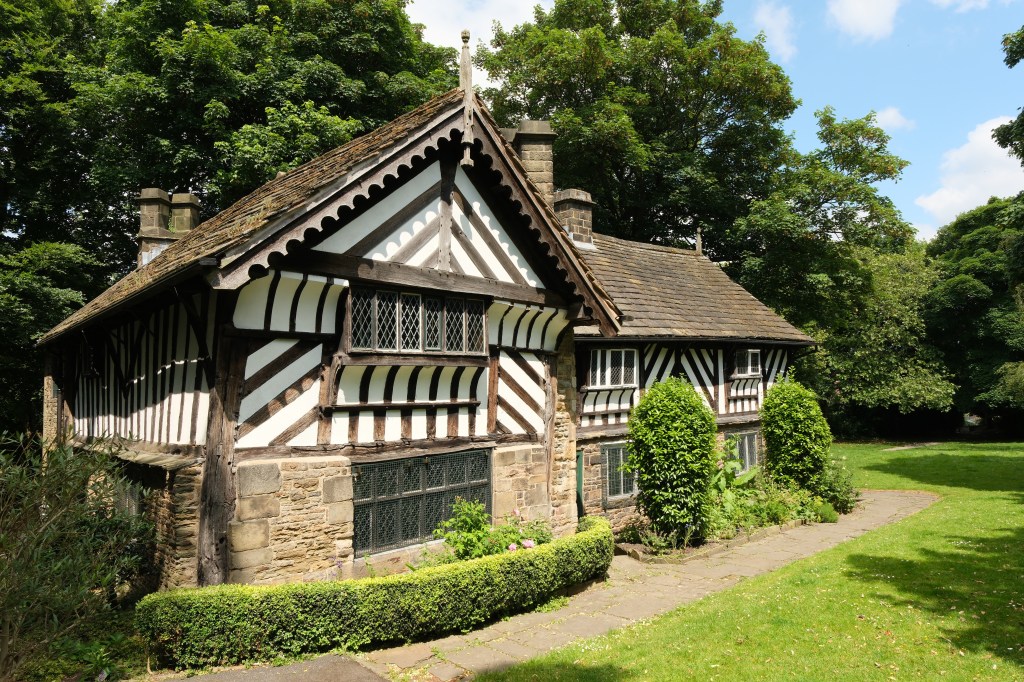Amateur Photographer verdict
The Fujifilm X-T50 raises the game in several ways, but ultimately it boils down to this: you won’t find a better APS-C camera at this price. Read on!- 40MP sensor and processor from XT5
- New film simulation and dial
- Great new 16-50mm lens
- Impressive image quality
- 2-way tilting screen not ideal for video
- Some may prefer a drive mode dial
- Auto subject detection AF would be nice
Fujifilm’s latest entry-level model gains the latest tricks, with a 40MP sensor, in-body stabilisation, and subject detection autofocus. Andy Westlake and Joshua Waller review this new camera to see if it belongs with the best Fujifilm cameras.
At a glance:
- 40.2MP APS-C X-Trans sensor
- ISO 125-12,800 (standard)
- 8fps shooting (20fps electronic shutter / 1.3x crop)
- 2.36m-dot, 0.62x electronic viewfinder
- 3in, 1.84m-dot tilting touchscreen
- 6K 30p, 4K 60p, Full HD 240p video
- In-body image stabilisation, up to 7 stops
- Available in silver, black, or charcoal grey
Fujifilm’s double-digit X-T series cameras have long been among our favourites in the highly competitive entry-level class. Ever since the original X-T10 appeared in 2015, they’ve offered a winning blend of compact size, engaging handling and excellent image quality. This year’s Fujifilm X-T50 continues in the same vein.
Following on from the three-year-old X-T30 II – itself a relatively minor iteration to the X-T30 from 2019 – the X-T50 gains essentially the same improvements that we recently saw in the popular X100VI fixed-lens compact.
Major updates include a 40MP sensor, 6K video recording, in-body image stabilisation, and subject detection autofocus. Together, these place it right at the top of its class in terms of core specifications. The X-T50 doesn’t officially replace the X-T30 II in the firm’s line-up, with the older model remaining on sale at a much more affordable price.
Fujifilm X-T50 Features
In essence, the X-T50 takes the same core imaging hardware as the higher-end X-T5 and the X100VI, and places it in a compact body that’s styled like a traditional SLR. So you get Fujifilm’s 40.2MP X-Trans CMOS 5 HR sensor; not only a major enhancement over the 26.2MP sensor in the older X-T30 II, but also providing higher resolution than rival APS-C models. In concert with the X-Processor 5, this also enables 6K video recording at 30fps, 4K at up to 60fps, or Full HD at 120fps.
Key photographic specs include a sensitivity range that covers ISO 125-12,800 as standard, expandable to ISO 64-51,200. Timed shutter speeds run from 15min to 1/4000sec, or as fast as 1/180,000sec using the electronic shutter. Continuous shooting is available at up to 8 frames per second with the mechanical shutter, or up to 20fps using the electronic shutter with a 1.29x crop.
Fujifilm X-T50 Highlights
- Film dial – The dial on the top left provides direct access to Fujifilm’s popular Film Simulation colour profiles
- Stabilisation – The in-body image-stabilisation promises up to 7 stops shake reduction while adding little to the body size and weight
- Subject detection – The autofocus system can be set to recognise and track people, animals, and vehicles
- Analogue Controls – Shutter speed and exposure compensation dials are found on top, while most Fujifilm lenses have aperture rings
Thanks to the new processor, the camera gains subject detection for autofocus. As with Fujifilm’s other cameras, this encompasses animals, birds, cars, motorbikes, airplanes and trains. Face and eye detection for people is also included but accessed via a separate setting.
Another significant update is the addition of in-body image stabilisation (IBIS), which appears for the first time in this series. Like the X100VI, Fujifilm has managed to add this while adding minimal extra bulk, with the body gaining only a few millimetres in depth and a little over 50g in weight. Even so, the camera is still attractively compact and lightweight, at approximately 124 x 85 x 49mm and 438g. If anything, it’s more comfortable to hold, thanks to a slightly beefier handgrip.
For power, the camera uses Fujifilm’s familiar NP-W126 battery, which charges in-camera via USB-C and should be good for 390 shots per charge. A single SD card slot occupies the same compartment in the base and supports fast UHS-II type cards for extended burst shooting. There’s a 3.5mm stereo microphone input, which doubles up as a remote release socket, along with USB-C and micro-HDMI connectors. As usual, Wi-Fi and Bluetooth are built in for smartphone connectivity.
Video features
For video, the X-T50 carries across many features of the X-T5. It’s capable of internal 6.2K 30p recording in 4:2:2 10-bit colour, or alternatively can output raw video over HDMI in 4:2:2 12-bit, with a choice of ProRes or Blackmagic formats. The camera is also capable of operating as a plug-and-play webcam at 4K 60p resolution.
The small body size does however restrict recording times before over-heating. At 25°C, it’s rated to 60 minutes in 4K 30p, or 30 minutes when shooting in 4K 60p. Recording times will be reduced further at higher ambient temperatures.
New Film dial
In terms of controls, the X-T50 is a close match to its predecessor, with one major exception. The dial on the top left of the body, which previously controlled the drive mode, now provides direct access to the firm’s popular Film Simulation colour profiles. Thankfully the drive mode is still readily accessible via the Delete button on the top left.
There isn’t space on the film dial for all available options, so only the most popular ones get their own slots (Provia, Velvia, Astia, Classic Chrome, Real Ace, Classic Neg, Nostalgic Neg and Acros). There are also three custom slots (FS1…) where users can place their personal favourites, plus a C position that gives access to the complete set via the Q menu. Users can, if they like, assign one of the colour filter emulations to the Acros slot (yellow, red, or green).
The custom slots (FS1, FS2, and FS3) can be set to one of the Fujifilm Film Simulations, however, these can’t be used to store your own “Film Recipes” setup, which feels like a missed opportunity. For this, you can use the C position, and setup all the film settings however you like.
This dial is sure to polarise opinion among photographers. Film simulations have proven very popular among users who want to share their images directly from the camera, so it makes sense for Fujifilm to make them easier to access. However, those who only shoot in raw and edit all their shots on a computer afterwards might be frustrated to have a dial dedicated to a setting they don’t use. This also makes it slightly slower to get to the video mode, as you need to press the Drive mode button, and then go up (or down) through the options – though you could customise a button on the camera to give quicker access.
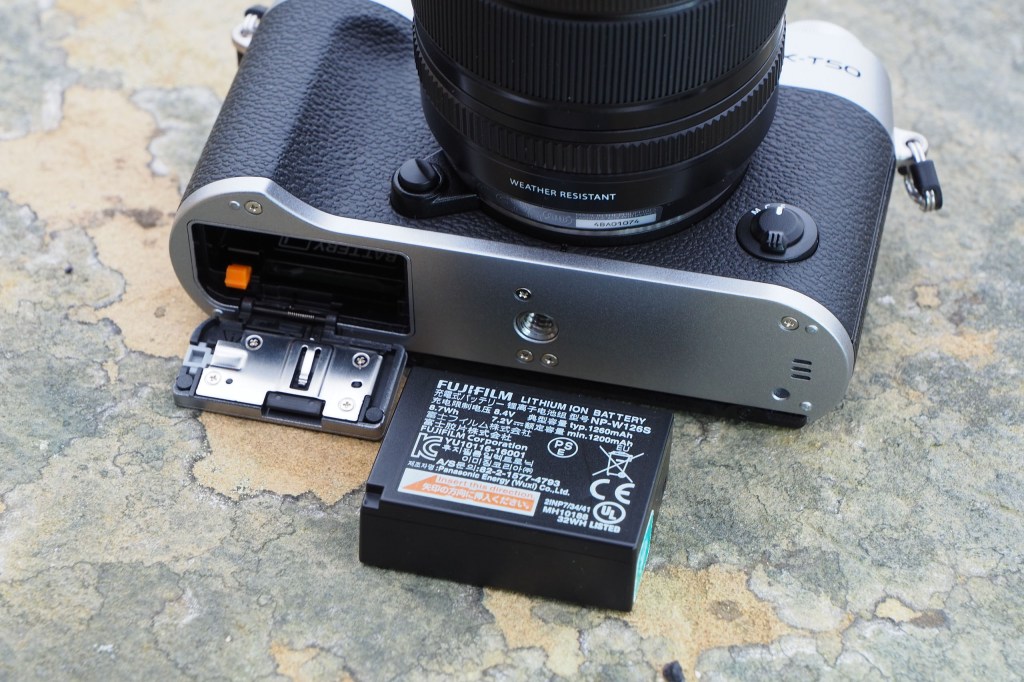
Build and handling
Elsewhere, the main controls remain the same. You get top-plate dials for shutter speed and exposure compensation, while an electronic dial on the front is used to change ISO. A small joystick on the back is used to position the focus point and navigate settings and menus. Most Fujifilm lenses have dedicated aperture rings, but with the firm’s cheaper XC lenses, the aperture is controlled using the front dial. Clicking it inwards toggles between aperture and ISO setting. Many third-party autofocus lenses from the likes of Tamron and Sigma work in the same way.
For composing and viewing your images, there’s an electronic viewfinder that’s similar in size and resolution to before, at 2.36m-dot and a 0.62x magnification. This is rather small, but that’s just one of the compromises you often have to make with cameras at this level. The viewfinder does look good, and with dioptre adjustment you can adjust it if needed.
Below it, the 3-in, 1.84m-dot screen looks very good. It tilts up and down, but it doesn’t have a third hinge for portrait format shooting. It can’t be set facing forwards for selfies or vlogging, either. This reinforces the X-T cameras’ positioning as being mostly for stills photography, with the X-S10 and X-S20 aimed more at hybrid users.
Compared to the Fujifilm X-T5 and X100VI
Inevitably, when compared to the higher-end Fujifilm X-T5, the X-T50 gives up a fair few features. Most obviously, it lacks a physical ISO dial, has a smaller viewfinder, and its screen only tilts in two directions rather than three. It also makes do with a smaller battery, a single card slot rather than two, and no weather-sealing. The X-T5 can shoot twice as fast at full resolution (15 fps vs 8fps) and supports tethered shooting.
These are all entirely sensible compromises in exchange for the X-T50’s smaller size and lower price. However, there’s still plenty in favour of the X-T5 for more advanced users.
Some photographers might also consider the X-T50 as an interchangeable-lens alternative to the X100VI. While it will never be quite as portable – except perhaps with the ultra-compact XF 27mm F2.8 R WR ‘pancake’ lens – it does have a very similar feature set and will take pictures that are every bit as good. Plus, of course, you get interchangeable lenses, and the kit lenses allow you to zoom. So despite the hype around the X100VI, the X-T50 is likely to be a more practical option for many users.
Autofocus
Subject detection can be set to focus on one of the following: animals, birds, cars, motorbikes, airplanes, or trains, or alternatively you can set it to focus on human eyes and faces.
In the auto mode (flick the switch on top of the camera) and the camera can automatically detect the subject, and selects the correct focus system depending on the subject. Point the camera at a cat, it’ll switch to animal AF, point it at a human, it’ll switch to face/eye AF detection.
However, use the camera in any other mode, and you have to manually select the subject before shooting, and this isn’t made easy, as the options for (human) face detection are in a separate menu to the other subjects. You can setup the subject selection option to the Quick menu, which does give quicker access, and you can put it in the ‘MyMenu’ if you find yourself using these settings often.

There’s no search function on the menus, so it can take a while to get used to the menus and find where everything is kept. Whilst very few, if any, cameras actually have a searchable menu, it’s with long menu systems that the need becomes all the more important.
Fujifilm X-T50 Performance and Image Quality
I tested the Fujifilm X-T50 using the new XF 16-50mm lens, along with other lenses. The 16-50mm lens offers a compact zoom lens option with a relatively bright F2.8 aperture at the wide-end, and F4.8 at the telephoto end, and gives a 24-76mm equivalent in 35mm format terms. It’s worth making sure you don’t confuse it with the XC 16-50mm F3.5-5.6 OIS II lens; now discontinued.
With weather-resistance you can pair it with weather-sealed cameras (like the X-T5) for added protection. Unfortunately the X-T50 doesn’t feature weather-sealing, but around this price point, weather-sealing is quite rare, with the OM System OM-5 being one camera that does feature this.
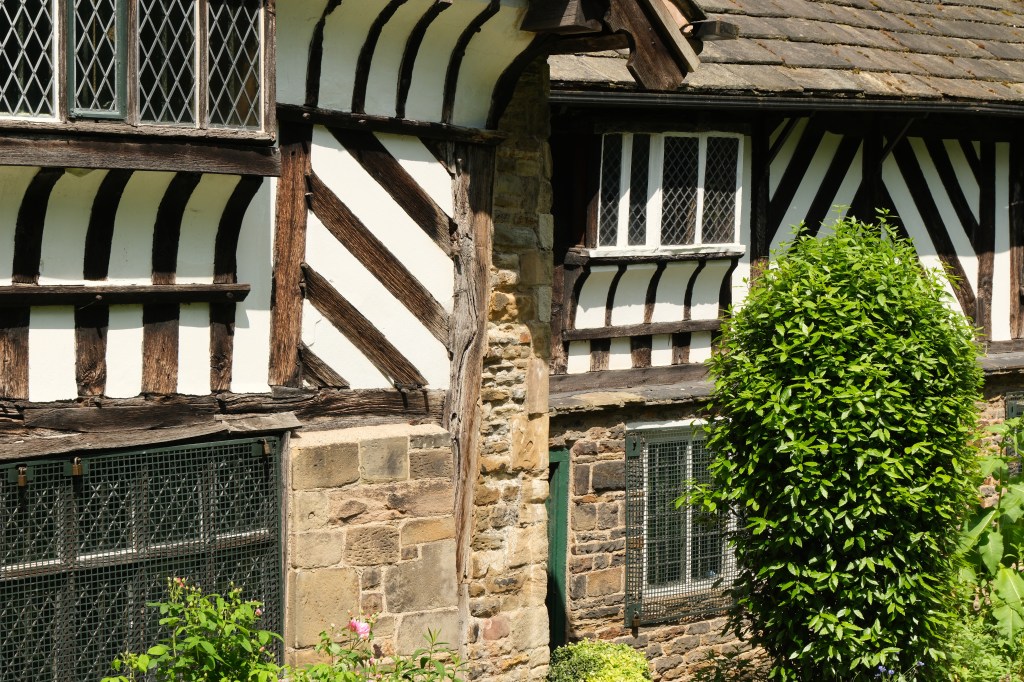
I also used the X-T50 with Fujifilm’s 150-600mm lens, and whilst the camera body seemed a little bit small when used with the 150-600mm lens, it still delivered great image quality.
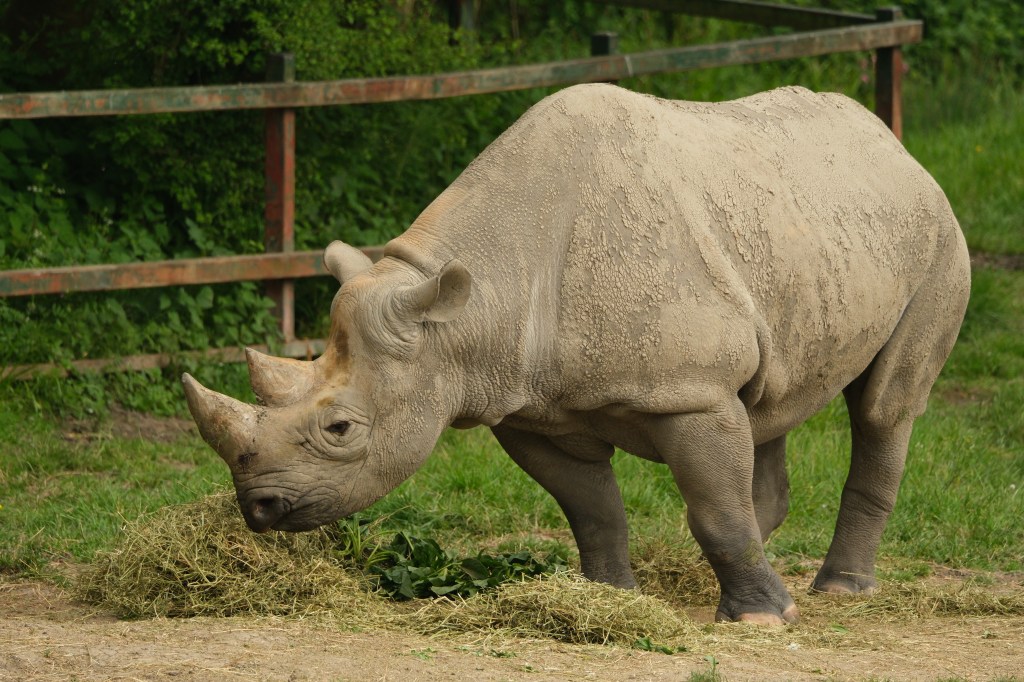
Colour reproduction is very pleasing, with the camera delivering the strong punchy colours expected from Fujifilm cameras. This is partly to do with Fujifilm’s white balance performance delivering great results. I used the camera with the auto white balance adjusted for warmth (using the Auto – Ambience Priority setting), and got great results. The camera gives you three different “Auto” white balance options, including Auto – White Priority, standard Auto, and Auto – Ambience priority, with the latter option giving warmer whites.
With the Film Simulation dial you can quickly change to a different colour (or film) mode if needed, and switching to Velvia, for example, will boost the colour saturation further.
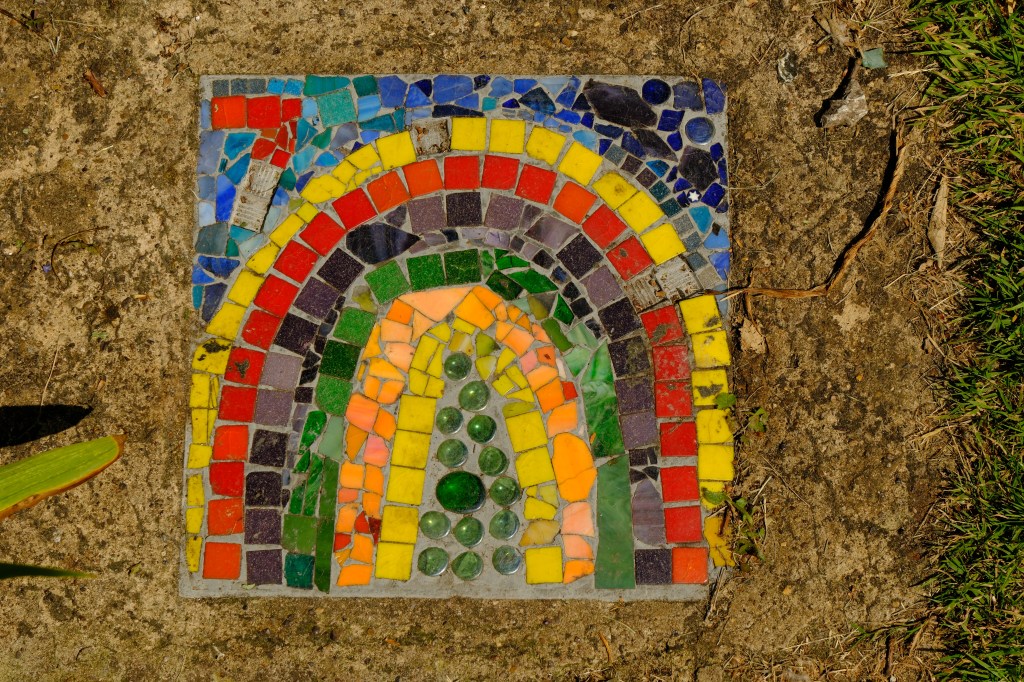
Noise levels remain low at the lower ISO speeds. As the ISO speed increases the level of detail captured drops a little bit, particularly in terms of fine detail, but as seen on other Fujifilm cameras, the noise pattern looks relatively pleasant. In low-light conditions, the in-camera image stabilisation system works well, helping keep the ISO speed down.

Autofocus performance was generally very reliable, with the camera finding the subject quickly. When photographing animals, the animal detection focus was particularly helpful, as this would lock on to the eye(s) of the subject, ensuring the correct focus point. This was also of real benefit when taking photographs of animals in a zoo, meaning that I could shoot through fences without too much worry. The only real downside was having to go into the menus (or Q-menu) to switch between animals and birds, when the subject changed. It would be really nice to see the camera automatically detect the subject.
Fujifilm X-T50 Verdict
The Fujifilm X-T50 is a very attractive camera indeed. It continues with everything we like about the series, yet adds some extremely useful extra features such as subject recognition, in-body image stabilisation (IBIS) and a 40MP sensor. Fujifilm has certainly been on a roll recently, and the X-T50 is another winner. For fans of Fujifilm’s Film Simulation, the new mode dial will be a particularly useful feature, making it easier to change settings.
Looking at Fujifilm’s X-series range of mirrorless cameras, it’s difficult to see any other company offering such a comprehensive and compelling range of cameras. Not only do you get excellent handling, design and controls, but also in-body image stabilisation, and a high resolution 40MP sensor, that no other APS-C camera brand can match.
In fact, the X-T50 offers a higher resolution than a lot of full-frame mirrorless cameras, and is considerably cheaper than the most of them. Combine all this with the wide-range of relatively compact Fujifilm X-mount lenses, and you have a real winner here. The only people who may not be perfectly served by the X-T50, are those interested primarily in video, with the fully-tilting screen found on other models being a better option.

Fujifilm X-T50 Full Specifications
| Sensor | 40MP X-Trans CMOS 5, 23.5mm x 15.7mm (APS-C) |
| Output size | 7728 x 5152 |
| Lens mount | X-mount |
| Shutter speeds | 30 sec – 1/4000sec (mechanical); 30sec – 1/180,000sec electronic |
| Sensitivity | ISO 125-12,800 (standard), ISO 64-51,200 (extended) |
| Exposure modes | PASM, Auto |
| Metering | Multi / Spot / Average / Center Weighted |
| Exposure comp | +/- 5EV on 0.3EV steps |
| Continuous shooting | 8fps (mechanical shutter); 20fps with electronic shutter and 1.29x crop |
| Screen | 3in, 1.84-dot tilting touchscreen |
| Viewfinder | Electronic 2.36m-dot, 0.62x OLED EVF |
| AF points | 117 or 425 |
| Video | 6K 30p, 4K 60p, Full HD 240p |
| External mic | 3.5mm stereo |
| Memory card | UHS-II SD |
| Power | NP-W126S Li-ion |
| Battery life | 305 shots (390 shots economy mode) |
| Dimensions | 123.8 x 84 x 48.8mm |
| Weight | 438g (inc battery and memory card) |

Article: Andy Westlake, Joshua Waller

